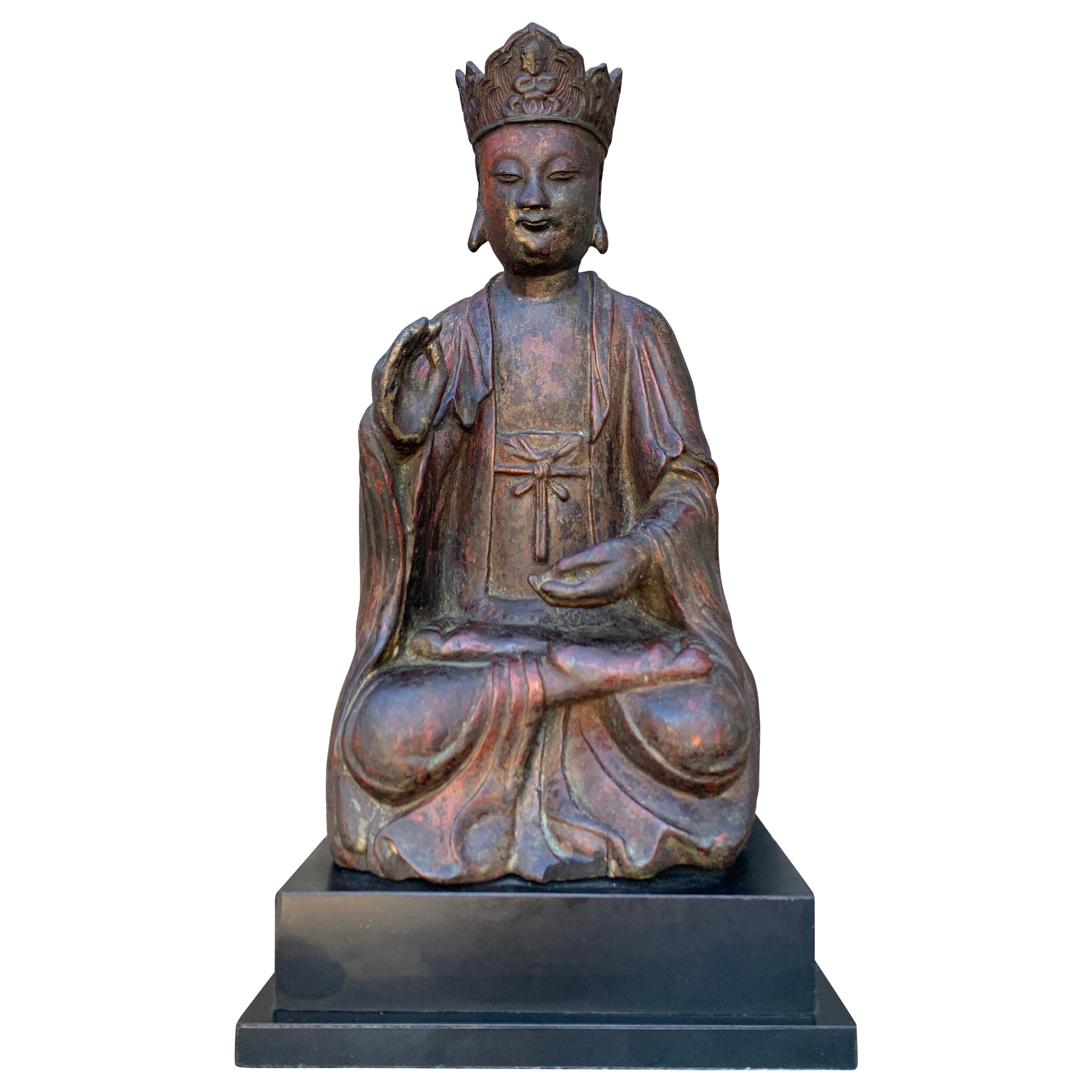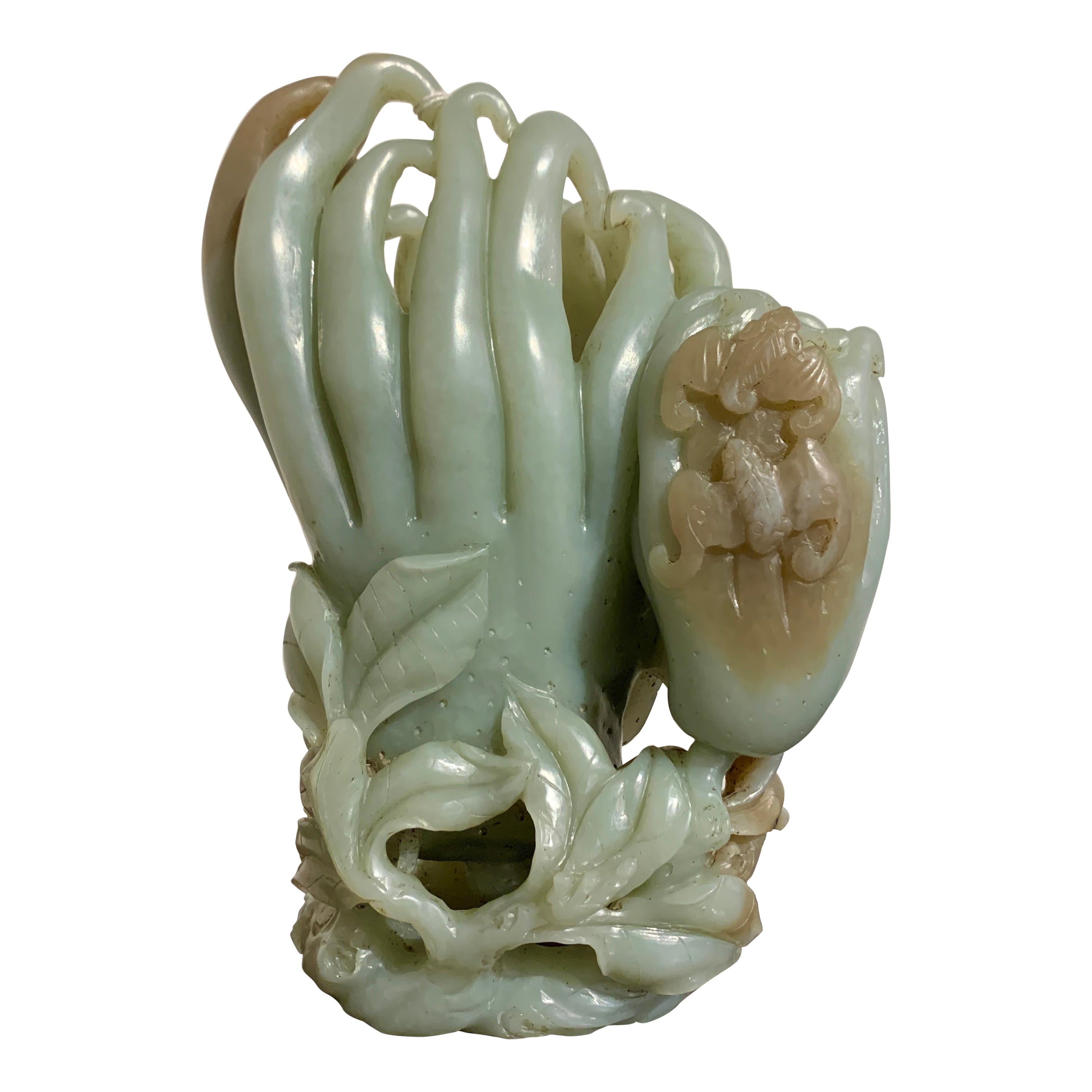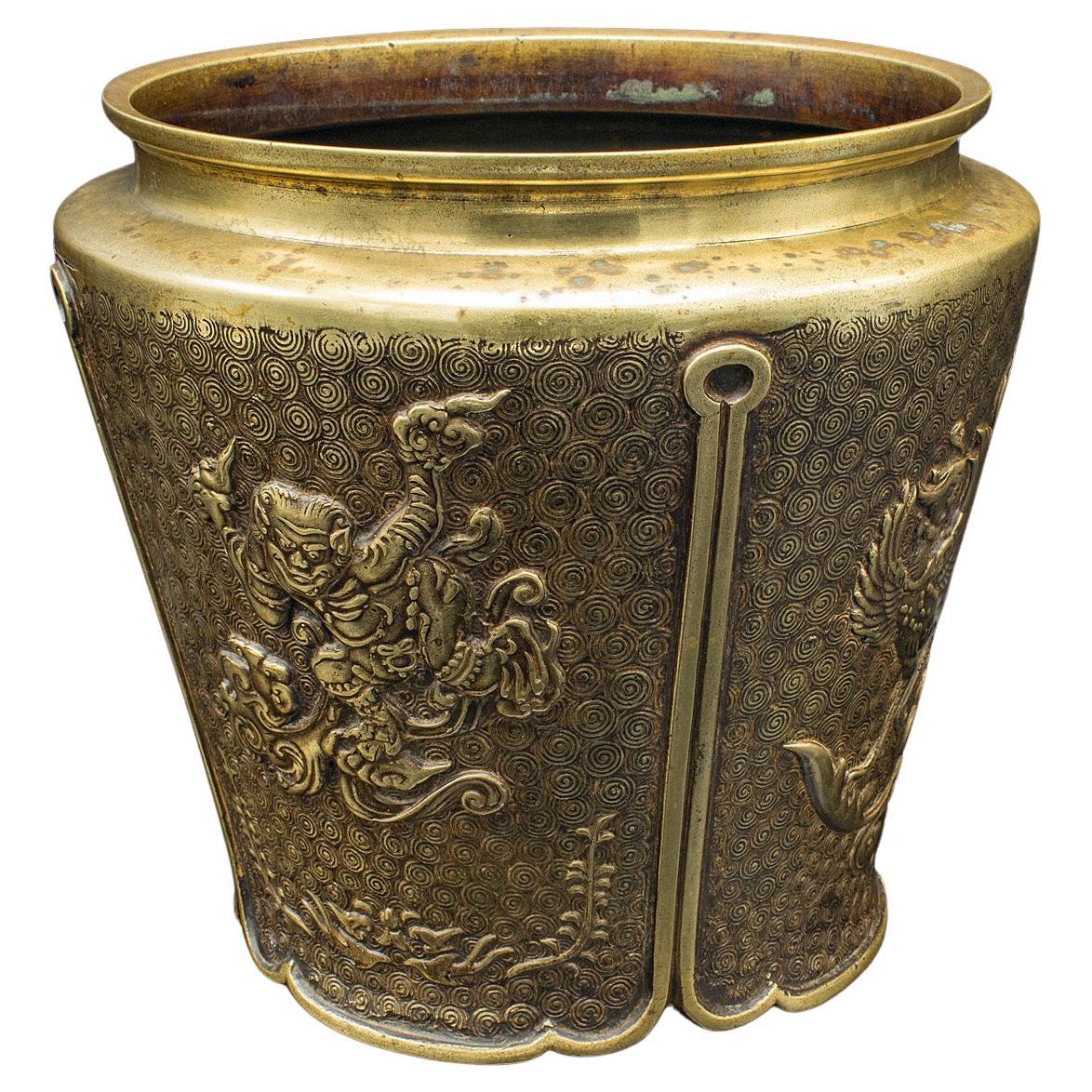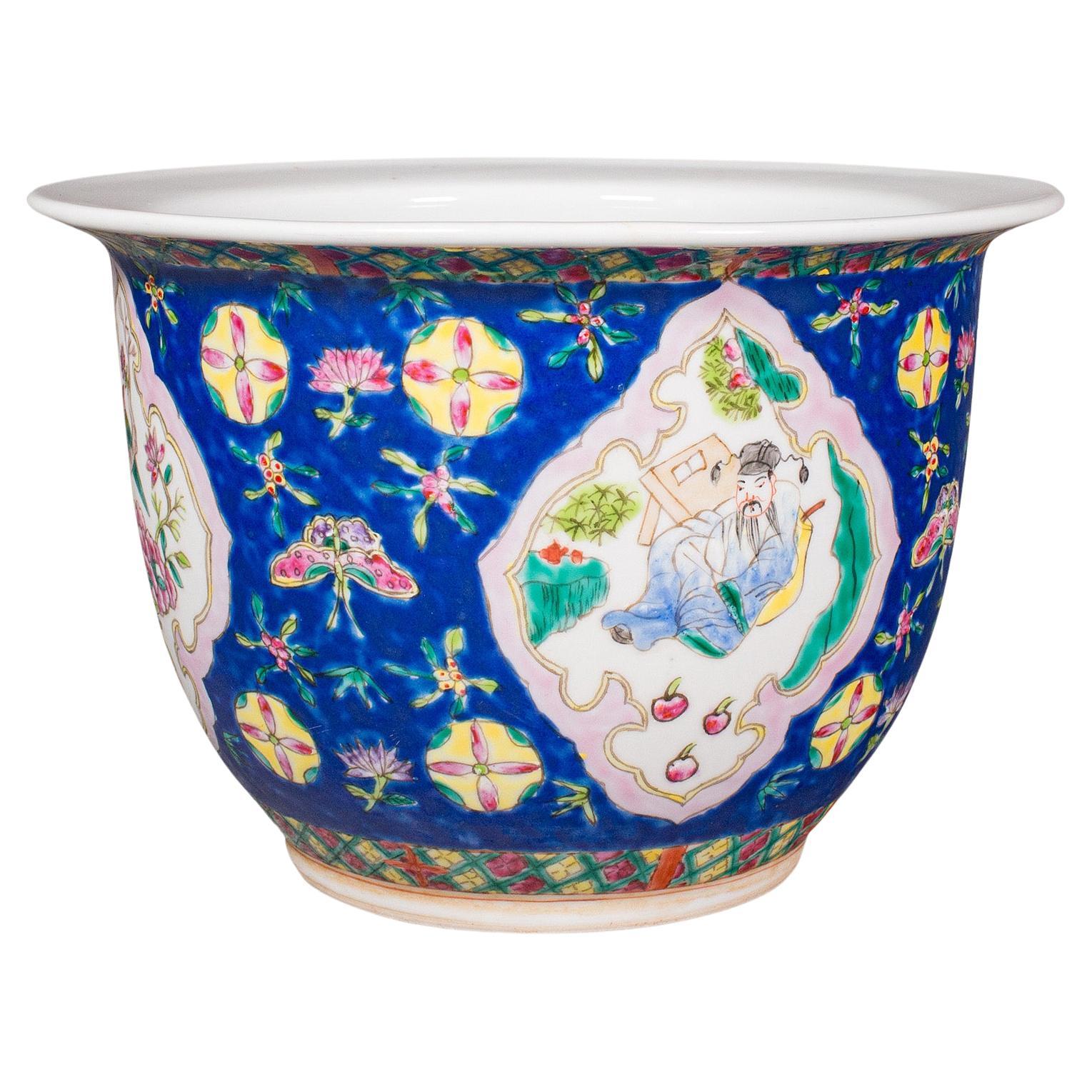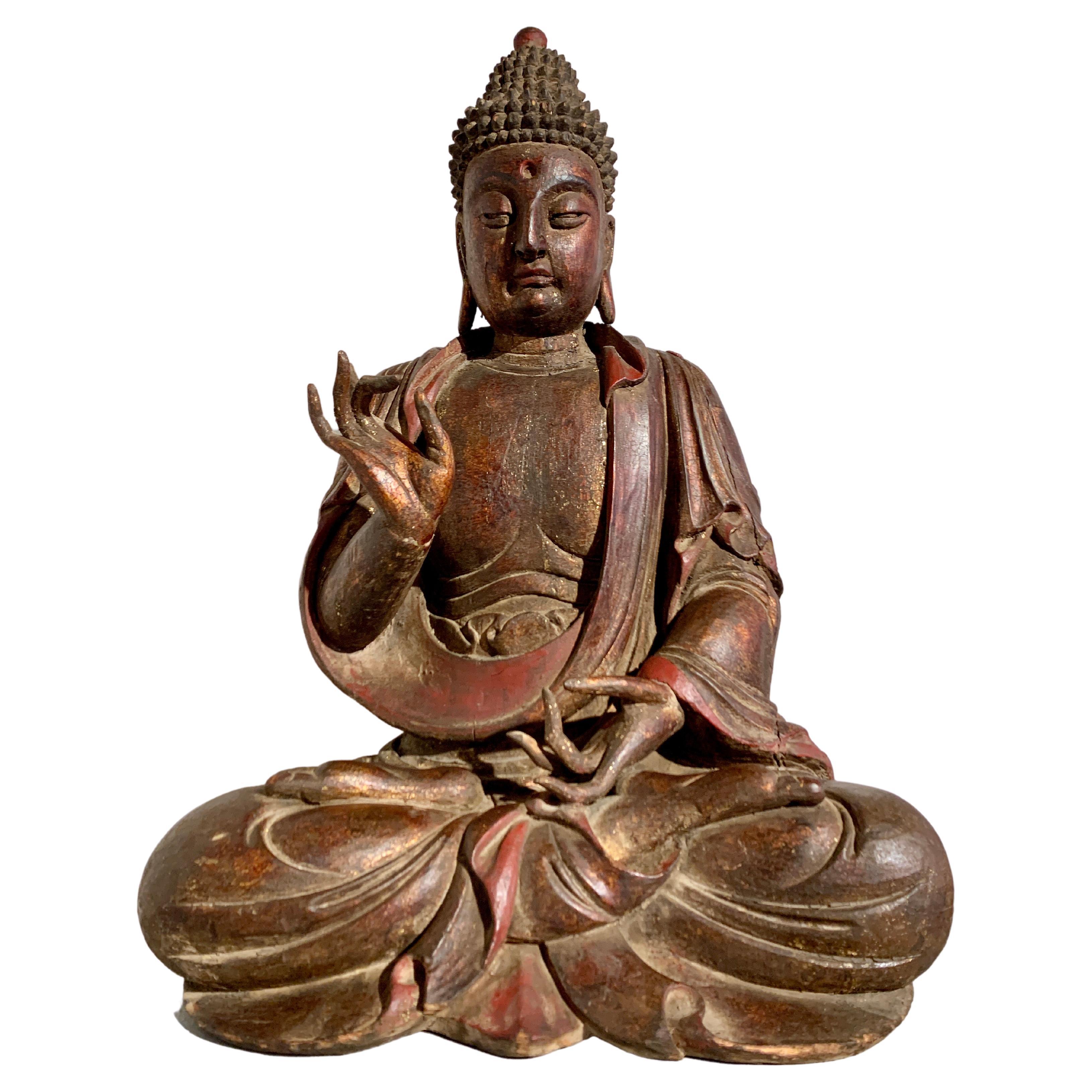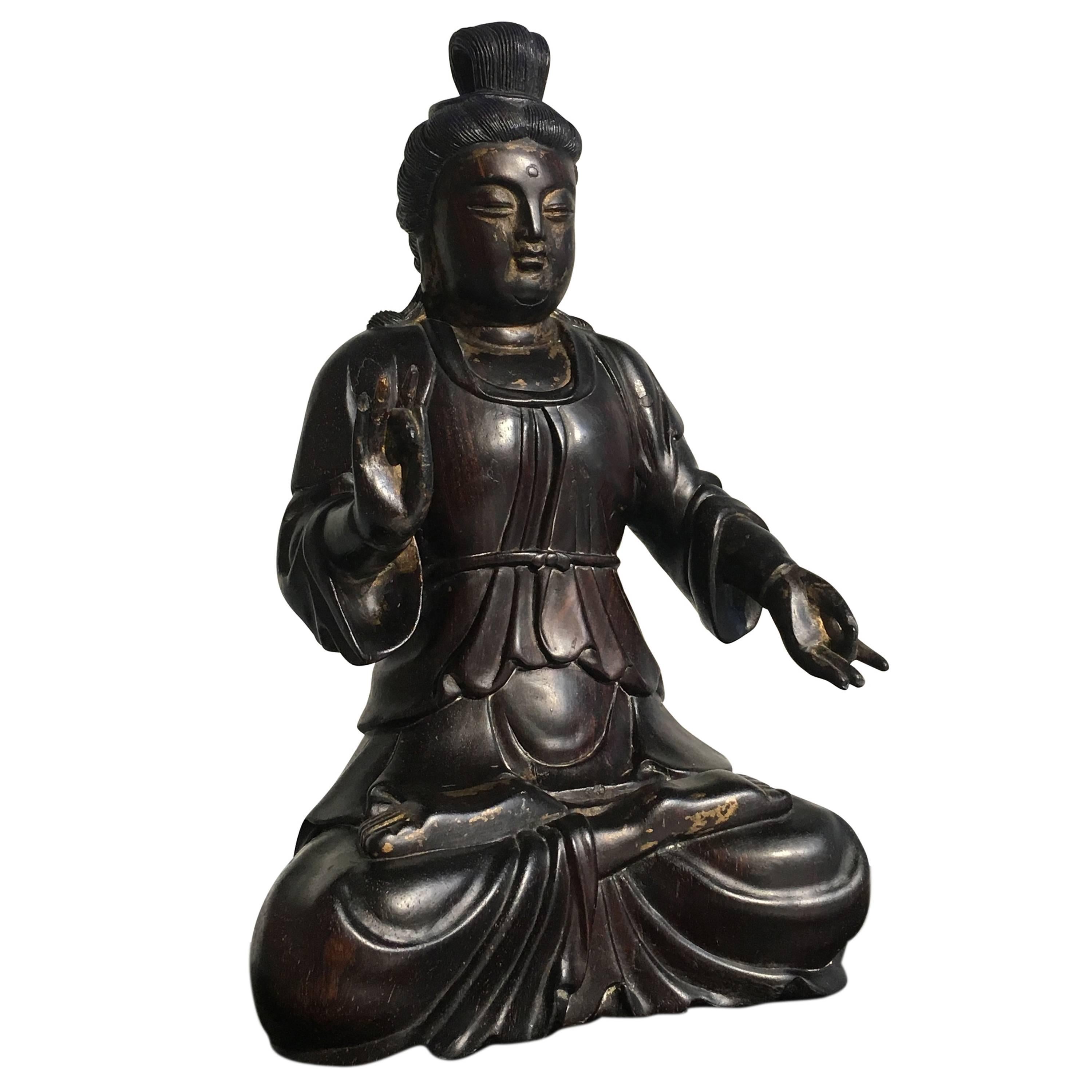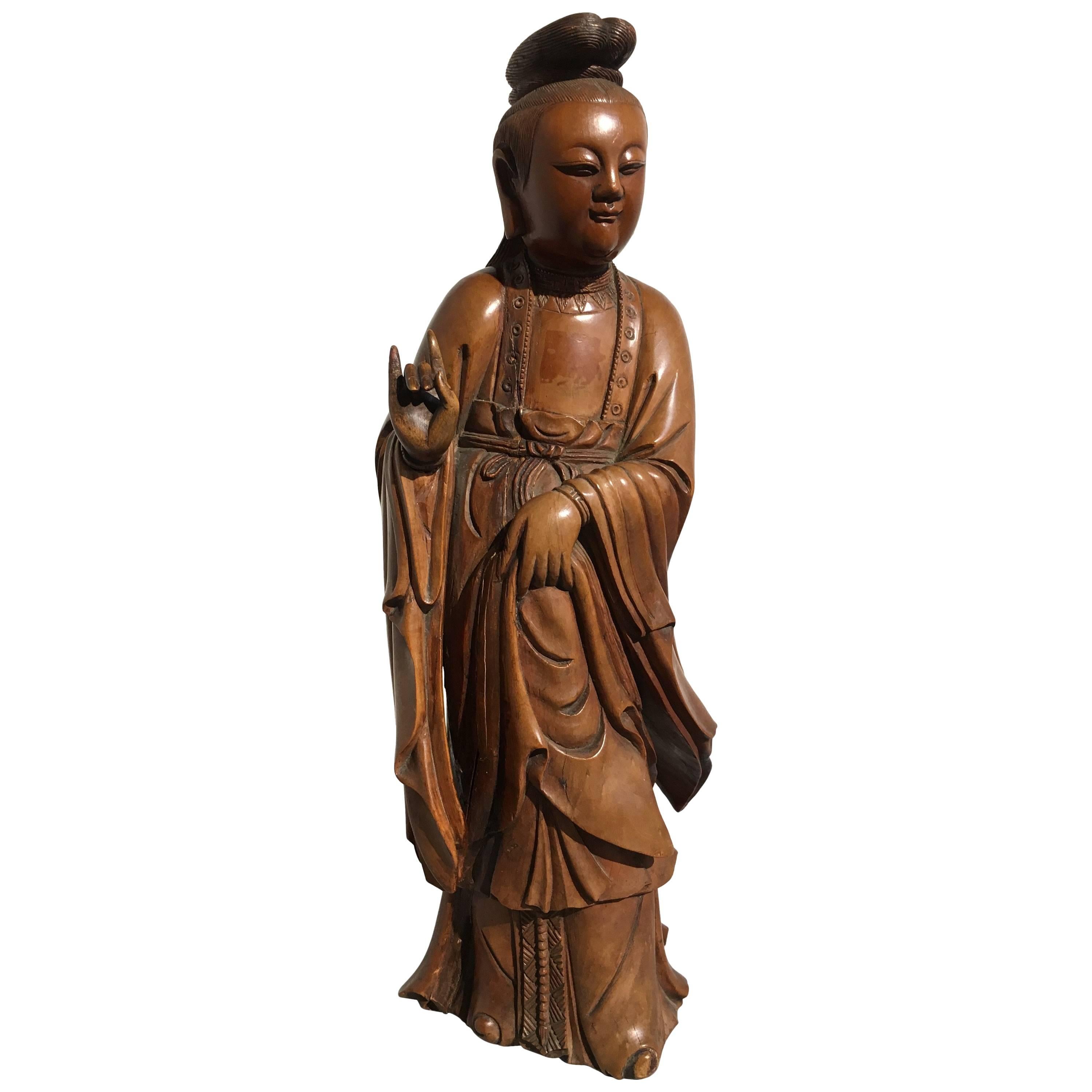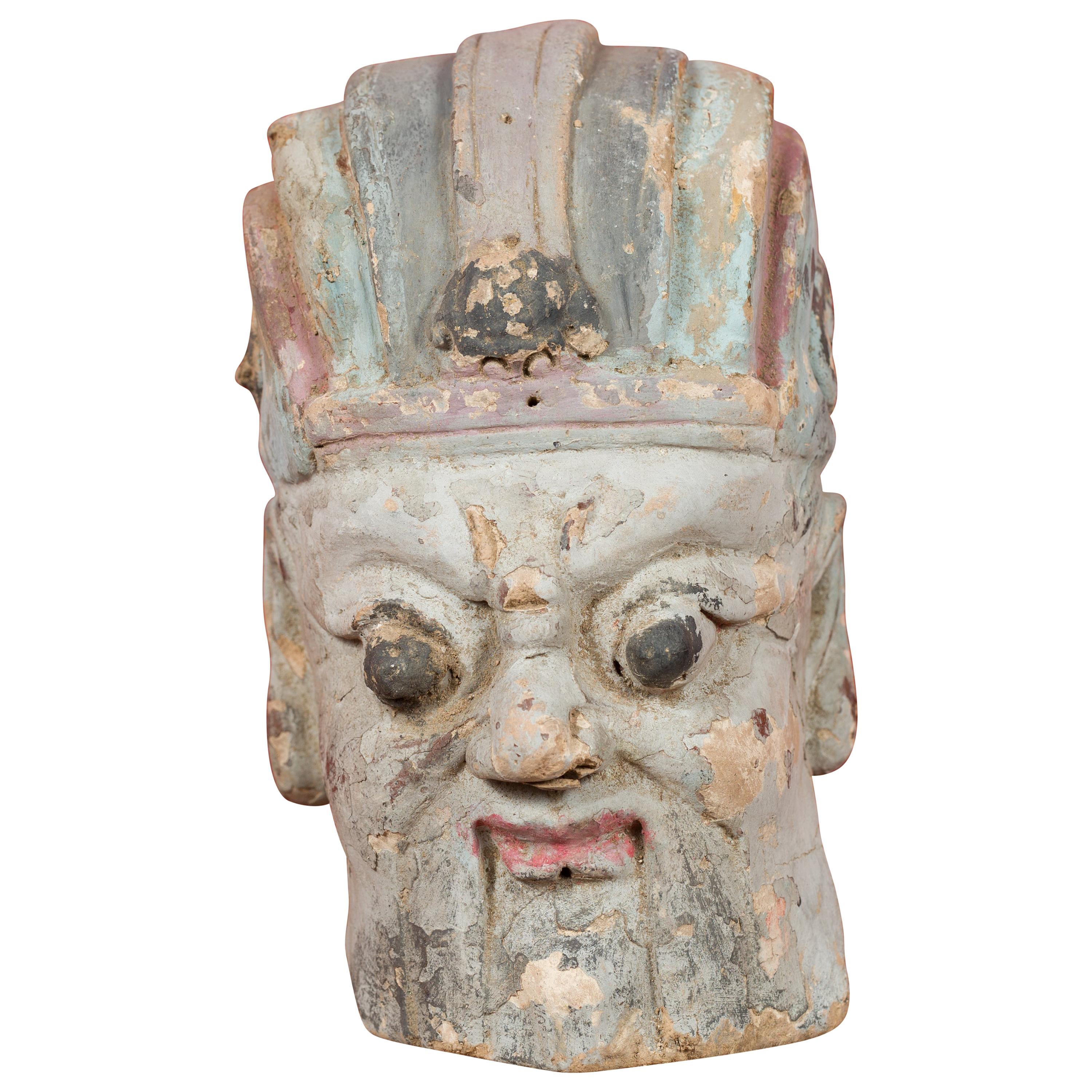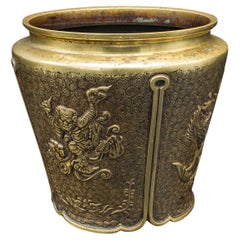
Chinese Decorative Lacquered Wood Jardinière, Qing Dynasty
View Similar Items
1 of 6
Chinese Decorative Lacquered Wood Jardinière, Qing Dynasty
About the Item
- Dimensions:Height: 7.75 in (19.69 cm)Width: 6.13 in (15.58 cm)Depth: 3.75 in (9.53 cm)
- Style:Qing (Of the Period)
- Materials and Techniques:
- Place of Origin:
- Period:
- Date of Manufacture:Mid-19th Century
- Condition:Wear consistent with age and use.
- Seller Location:New York, NY
- Reference Number:Seller: QA061521stDibs: LU4546214430071
You May Also Like
- Chinese Qing Dynasty Lacquered Wood Guanyin, 18th Century, Southern ChinaLocated in Austin, TXA Chinese early Qing Dynasty carved and lacquered wood figure of Guanyin, Southern China, 17th/18th century. Guanyin, the Bodhisattva of Compassion and Mercy, is portrayed seated in dhyanasana, one hand raised in viktara mudra, the gesture of teaching and discourse. The great bodhisattva is dressed in heavy, loose robes tied at the chest, with a mantle draped over his shoulders. He looks serenely outwards from heavily lidded eyes. Guanyin's face carved beautifully with somewhat feminine features. A large five pointed crown sits upon his head. The larger leaves of the crown carved with indistinct images of the Buddha. The statue was originally fully lacquered in the deep red gilt lacquer typical of Southern Chinese Buddhist sculpture...Category
Antique Early 18th Century Chinese Qing Sculptures and Carvings
MaterialsWood
- Large Chinese Carved Nephrite Jade Double Buddha's Hand Vase, Late Qing DynastyLocated in Austin, TXA large and graceful carved nephrite jade conjoined double vase in the form of a pair of Buddha's hands fruit (finger citron), late Qing Dynasty, circa 1900, China. The large and heavy vase carved from a single piece of celadon nephrite jade, with areas of lighter brown "sugar" skin. The vase ingeniously carved as a pair of Buddha's hand fruit, also known as finger citron, rising from a gnarled, leafy branch. The smaller Buddha's hand with a pair of bats. The Buddha's hands fruit with elegant and naturalistic curved "fingers". The "fingers wonderfully shaped and reticulated. The body of the fruit with simple stippling, in imitation of the textured surface of the real fruit. The interior of each fruit well hollowed and able to hold water. Buddha's hands fruit are auspicious in Chinese culture. Their name in Chinese "Fo Shou" is a homophone for "Happiness and Longevity. They are often placed as offerings on Buddhist altars...Category
Antique Early 1900s Chinese Qing Sculptures and Carvings
MaterialsJade
- Antique Decorative Planter, Chinese, Bronze, Jardiniere, Qing Dynasty, VictorianLocated in Hele, Devon, GBThis is an antique decorative planter. A Chinese, bronze relief jardiniere in Qing dynasty taste, dating to the late Victorian period, circa 1900. Wonderfully eye-catching example o...Category
Antique Late 19th Century Chinese Late Victorian Planters, Cachepots and...
MaterialsBronze
- Antique Decorative Jardiniere, Chinese, Ceramic Planter, Qing Dynasty, VictorianLocated in Hele, Devon, GBThis is an antique decorative jardiniere. A Chinese, ceramic planter, dating to the late Victorian period, circa 1900. Delightful decorative interest with rich colour and Oriental t...Category
Antique Late 19th Century Chinese Late Victorian Planters, Cachepots and...
MaterialsCeramic
- Large Chinese Carved and Lacquered Buddha, Qing Dynasty, 19th CenturyLocated in Austin, TXA large and magnificent near life-sized Chinese carved and lacquered wood figure of a Buddha, Qing Dynasty, 19th century or earlier, southern China. The figure likely represents one of the Five Tathagatas, also known as Dhyani Buddhas or Wisdom Buddhas. More specifically, either Amitabha or Amoghasiddhi. Amitabha is the Buddha of infinite light, and represents the wisdom of observation and recognition. Amoghasiddhi is the Buddha of accomplishment, and represents the wisdom of perfected practices. The size and scale of the Buddha indicates it was made for temple worship. The large Buddha is portrayed seated in vajrasana, or full lotus position, with the soles of both feet facing up. His elegant hands, with impossibly long and slender fingers, perform shuni mudra, the gesture of bestowing patience. His right arm is bent at the elbow, the right hand raised to heart level. The left arm resting gently in his lap, the left hand at navel level. The Buddha is dressed in voluminous robes that wrap around his shoulders and body, and tied at the waist. The heavy fabric draping and pooling elegantly all around his robust body. His broad chest and right arm exposed. The Buddha's face is both solemn and beatific - his expression seeming to change depending on the angle of view. The most notable feature of his face is the large urna to the center of his forehead, set between a pair of painted, high arching brows over heavily lidded almond shaped eyes. A strong nose is set above a small mouth pursed in an ever so slight smile. Long pendulous earlobes touch his shoulders. The Buddha's hair arranged in the typical fashion, with "spikes" representing tight curls. A prominent ushnisha rises from the crown of his head, covered by more hair, and topped with a rounded protuberance. The Buddha is constructed from several blocks of wood, joined, carved and lacquered a deep red-brown with gold flecks...Category
Antique 19th Century Chinese Qing Sculptures and Carvings
MaterialsWood
- Chinese Carved Zitan Figure of a Bodhisattva, Qing DynastyLocated in Austin, TXA finely carved Chinese zitan wood figure of an unidentified bodhisattva, possibly Guanyin, late Qing Dynasty, circa 1900, China. The androgynous figure has a plump, almost matronly face, with downcast eyes and a gentle smile. The hair in long tresses, gathered and tied in a high chignon. The enlightened being is portrayed seated in dhyanasana, bare feet resting on crossed legs, both soles pointing up. Thick robes billow and drape around the full figured body. The hands display...Category
Early 20th Century Chinese Qing Sculptures and Carvings
MaterialsLapis Lazuli
Recently Viewed
View AllMore Ways To Browse
7 Inch Chinese Planter
Tole Flower Arrangement
Blanc De Chine Planter
Lip Gloss Cameo
Oval Wood Flower Pot
Dresden Planter
Austria Art Nouveau Jardiniere
Koi Planter
Large Antique Pickle Jar
Large Fishbowl Planter
Antique Chinoiserie Planter
Cache Porcelain Pair
Chinese Pickling Pot
Etched Brass Planter
French 19th Century Green Glazed Earthenware Planter
Planter Brass Modernist
Porcelain Blue And White Cache Pots
Rose Famille Chinese Porcelain Planter
